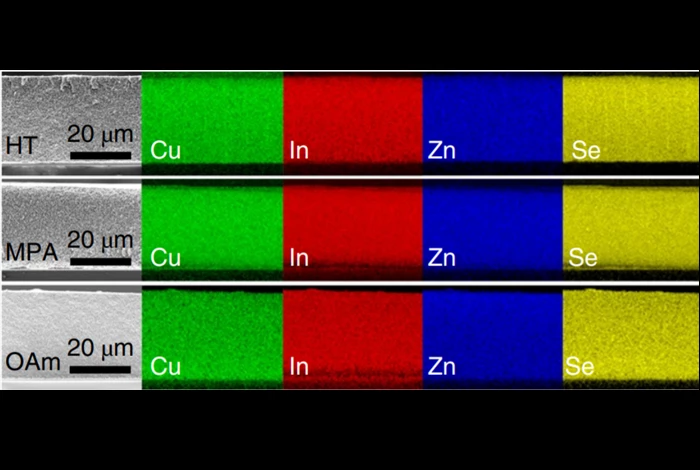Among their many uses, quantum dots have shown promise as photovoltaic materials in solar cells. Now, researchers at Los Alamos National Laboratory (LANL) have developed a new type of quantum dot solar cell that isn’t made with the toxic elements found in most, while maintaining efficiency.
Quantum dots are tiny, flat, circular semiconductor crystals. They measure just a few nanometers in diameter, and slight changes in their size dictates their color. They’re also very efficient at absorbing and emitting light, which has seen them turn up in devices like TVs, sensors and, of course, solar cells.
The main problem with quantum dot solar cells is that they’re made with toxic elements like lead and cadmium. So, for the new study the LANL team tried a different recipe, making their dots out of copper, indium and selenium that was then layered with zinc.

These quantum dots are then embedded into the pores of a titania film. When exposed to solar radiation, the quantum dots absorb the photons and release electrons into the surrounding titania, which produces a current. Combining so many elements into quantum dots introduces defects that should negatively affect the efficiency of the device. But in this case, the team found that the defects actually improved the light energy conversion process.
“We were pleasantly surprised by the results of the measurements of our devices,” says Victor Klimov, lead author of the study. “Due to their very complex composition (four elements are combined in the same nanosized particle), these dots are prone to defects. Despite these imperfections, they showed nearly perfect performance in our solar cells — per each 100 absorbed photons we detected 85 photogenerated electrons, implying that the photon-to-electron conversion efficiency was 85 percent.”
The actual solar energy conversion efficiency was much lower – only about nine percent. That’s about average for quantum dot solar cells, although a bit short of the world record of 16.6 percent, achieved a few months ago. That said, the team here was aiming for non-toxic quantum dots, not record efficiency.
The team says that the work shows just how useful quantum dot solar cells could be in future. Along with their new-found non-toxicity, they're already inexpensive to produce and can be scaled up relatively easily.
The research was published in the journal Nature Energy.
Source: Los Alamos National Laboratory




